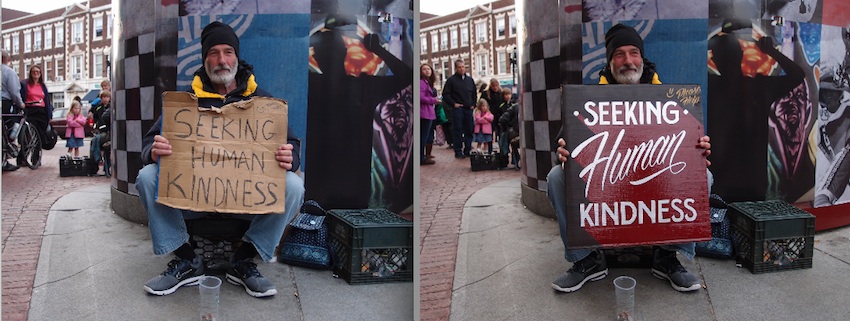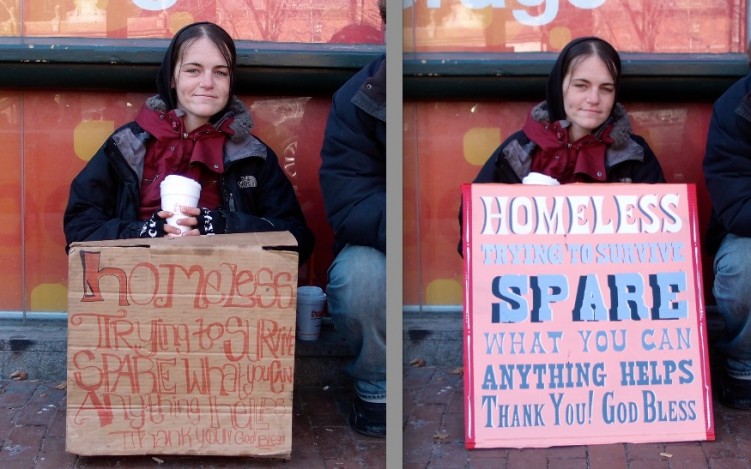‘Signs For the Homeless’ Brings Recognition to Often Ignored Population
In 2011, artist Kenji Nakayama started hand-painting signs for some of Boston’s homeless population, swapping out the dilapidated cardboard placards they held at street corners or at traffic stops, and replacing them with colorful, vibrant pieces of art, to help bring attention to their needs.
In the time since he launched the project, “Signs for the Homeless,” things have changed, however, and the sign exchange has opened his eyes to the problem of people living on the streets in the Greater Boston area. “The sign making is fun for me because I enjoy making the signs, and I like how they react when I give them to them. But it became less significant for me. It’s important, but when it comes to helping homeless people, it’s just a sign—now it’s more about the story about the people that is what matters,” said Nakayama. “The more I do this project, the more I have been learning about the community and becoming more aware of the variety of problems that homeless people have.”
After a front-page story put Nakayama’s artwork and ambitions in the spotlight last year, people began reaching out to him to express interest in helping him further his initiative. The project soon turned into a larger concept when Nakayama teamed up with Cambridge resident Christopher Hope. Instead of merely exchanging the old, worn-out cardboard signs for an artistic version hand-drawn by Nakayama, and taking photos of the before and after, the pair started interviewing the homeless subjects in an effort to tell their life stories.
Using their blog, Hope and Nakayama post the photos of each subject—with permission—and accompany the pictures with short biographies about each person. “We had a long discussion before we started working together to develop a formula for what we ask and what we want to tell people. When he first started, it was trading hand-painted signs, it was an interesting part of the project, but now I think its more about the story, and basically, my hand-painted signs are kind of like bringing a story to the public about the people I exchange the signs with,” said Nakayama.
Although he has faced some criticism with people claiming he’s exploiting those featured on the blog, Nakayama refutes the claims, and said he and Hope connect them with the necessary resources and even bring them food and coffee before taking on a subject. “Some people hate what we do. It’s the nature of human beings. Lots of people misunderstand what the project is, or what it has become,” he said. “The signs are more about telling people why they are homeless. The bios [on the blog] are more about giving a name and a face to the homeless. Each one is a human being, and their needs are different.”
Nakayama, who works full-time at the Boston-based Best Dressed Signs, where he does hand-painted logos for local businesses, has received artwork and offers from the U.S. and abroad, all wanting to be a part of the project. He plans to pursue it to see how it can get the public’s attention to think about what more can be done to help those that may be down on their luck—rather than just handing them some spare change while passing by. “There are people reaching out to me trying to support it. But for now, I don’t have a plan for quitting,” he said. “It’s a starting point. The sign is important, but when it comes to actually helping homeless people, it’s more important that people read the blog, and understand why they are homeless.”
Bobbi from Cambridge
Colleen from Cambridge





